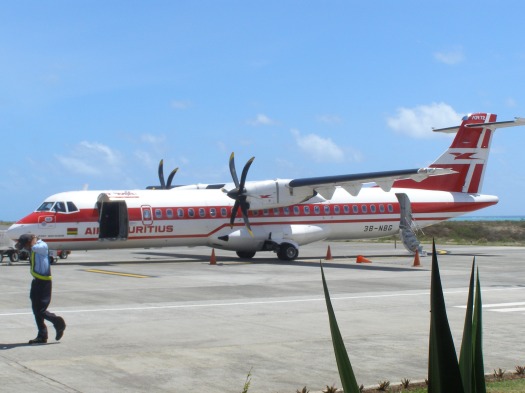The ferry to Rodrigues takes 36 hours from Port Louis to the capital, Port Mathurin and goes a couple of times a week. The plane takes ninety minutes and with only 50 seats each time there are only three, maybe four flights a day. Considering these are the links between the two major islands, there is not a huge capacity for movement. In fact the Rodriguans had long complained about this; there are no other flights from Rodrigues to other destinations. And the Air Mauritius flight was incredibly expensive for a quick hop.

Arrival in Rodrigues
I landed in blistering heat of mid afternoon at Sir Gaetan Duval Airport at the western tip of the island. The sun was blinding , the vegetation around me parched, and the peace and quiet audible. It was the total opposite of the cold, dark, noisy environment of the UK that I had left behind only some eighteen hours before.
Jeremy and Mike were there. They allowed me a cursory summary of my week in the north and the problems at Plaisance Airport, before spieling out their assessment of the island, the characters they had met and what our job was for the next five days.
Given it was Saturday, the island was almost deserted; we saw a few bodies under the shade of the few trees in back yards, the periodic vehicle heading along the road. We took a circuitous route to our hotel, along the northern coast road, and the two of them pointed out various features. We passed through the centre of Port Mathurin, almost deserted, and then drove over a big hill to the eastern flank of the island. Livestock grazing is a massive part of Rodrigues life so, unlike the dense plantation fields of Mauritius, much of the island was taken up with huge open grasslands. Due to an ongoing drought the land was devoid of anything but the most hardy shrubs. We descended towards the coast to a remarkable bay, the white sand fringed by palm trees and perfect size waves rolling in from the east. Along a small sandy track we passed through an open gate in a high stone wall and we were at Cotton Bay Hotel. I was settled in to a first floor room overlooking a beach covered in filao and palm trees.







